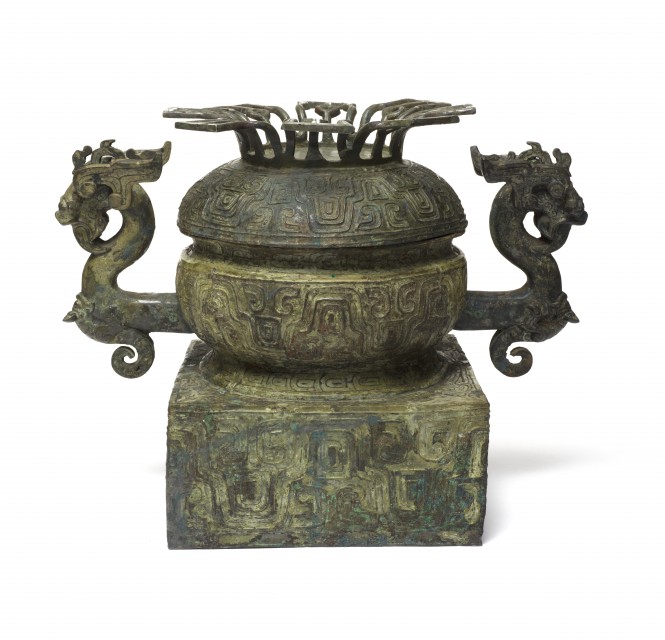
Food Vessel: Gui

Photography by Synthescape, Digital image © Asia Society
Food Vessel: Gui
about 6th century BCE
China, reportedly found in Shandong Province
Bronze
H. 12 3/4 including cover x W. 15 1/2 across handles in. (32.4 x 39.4 cm)
Asia Society, New York: Mr. and Mrs. John D. Rockefeller 3rd Collection, 1979.103a,b
Provenance
John D. Rockefeller 3rd, New York, NY; acquired from Christie’s, London, England, June 25, 1974.
The Asia Society, New York, NY, bequest of John D. Rockefeller 3rd, 1979.
Licensing inquiries
The striking contrast between the rounded bowl and square base of this vessel reflects their separate origins. Originally, gui food vessels were simple basins, but as the vessel type gained in importance at the beginning of the early Western Zhou period (ca. 1050-771 B.C.E.), a way was sought to enhance its visual impact. The solution was to raise it up on a square pedestal, initially of stone or wood, but soon cast in bronze integrally with the vessel. Pedestaled gui were intermittently popular during the Western Zhou period, but later disappeared except in eastern and south-central China. The retention of the pedestal and the flaccid wavelike pattern (actually a dissolved version of a mask) covering the surface of the gui thus reflect the conservative tastes of eastern states. This vessel, and an identical one in the collection of the Palace Museum in Beijing, are said to have been unearthed at Linzi, the ancient capital of Qi located in Shandong. The connection with Qi is confirmed by the very similar decoration on a basin cast as dowry for a Qi princess in either 603 or 558 B.C.E. The flamboyant dragon handles would have required multiple ceramic molds in order to produce such complex and undercut forms.


